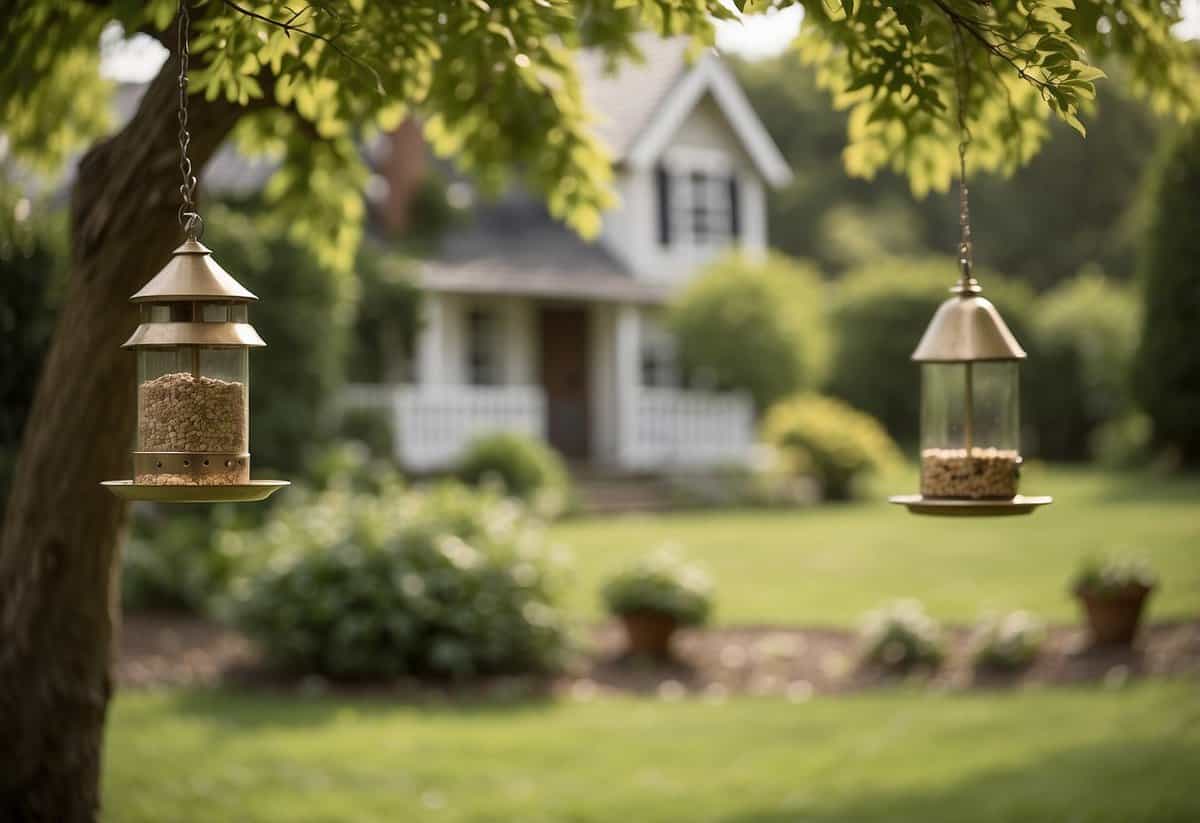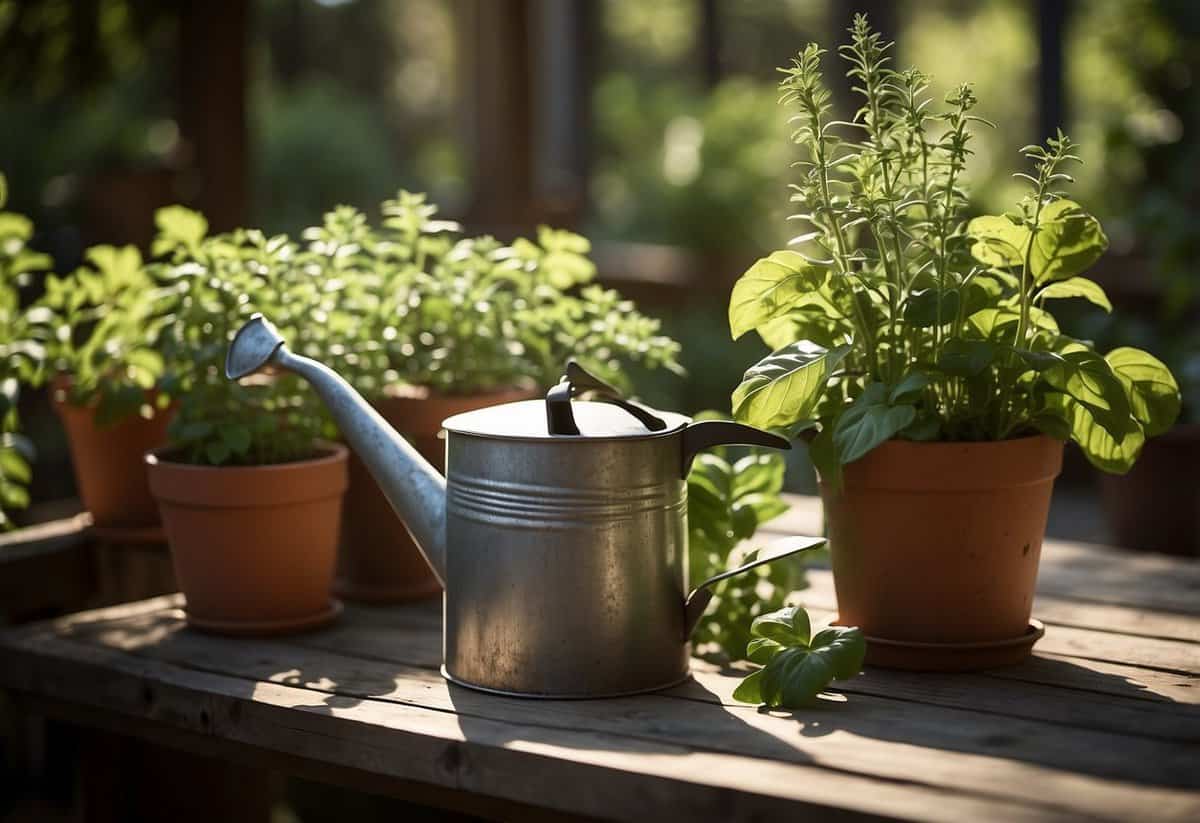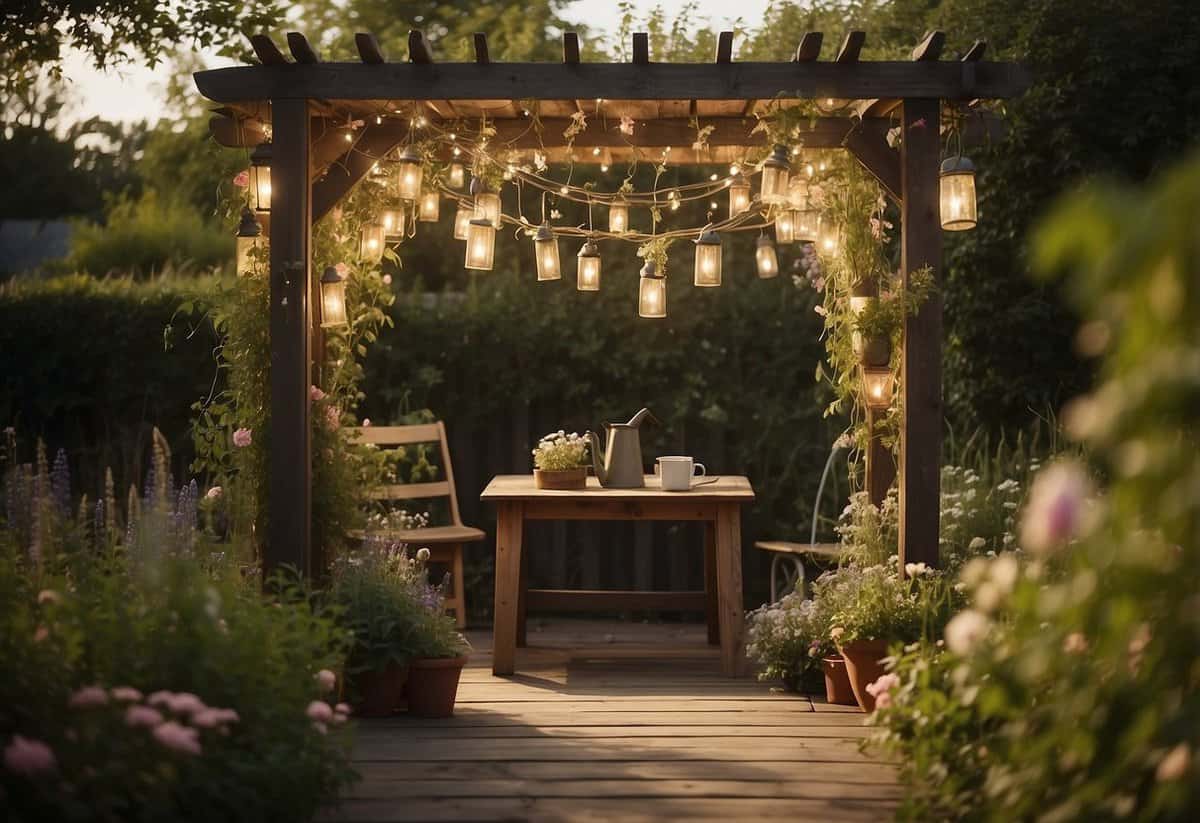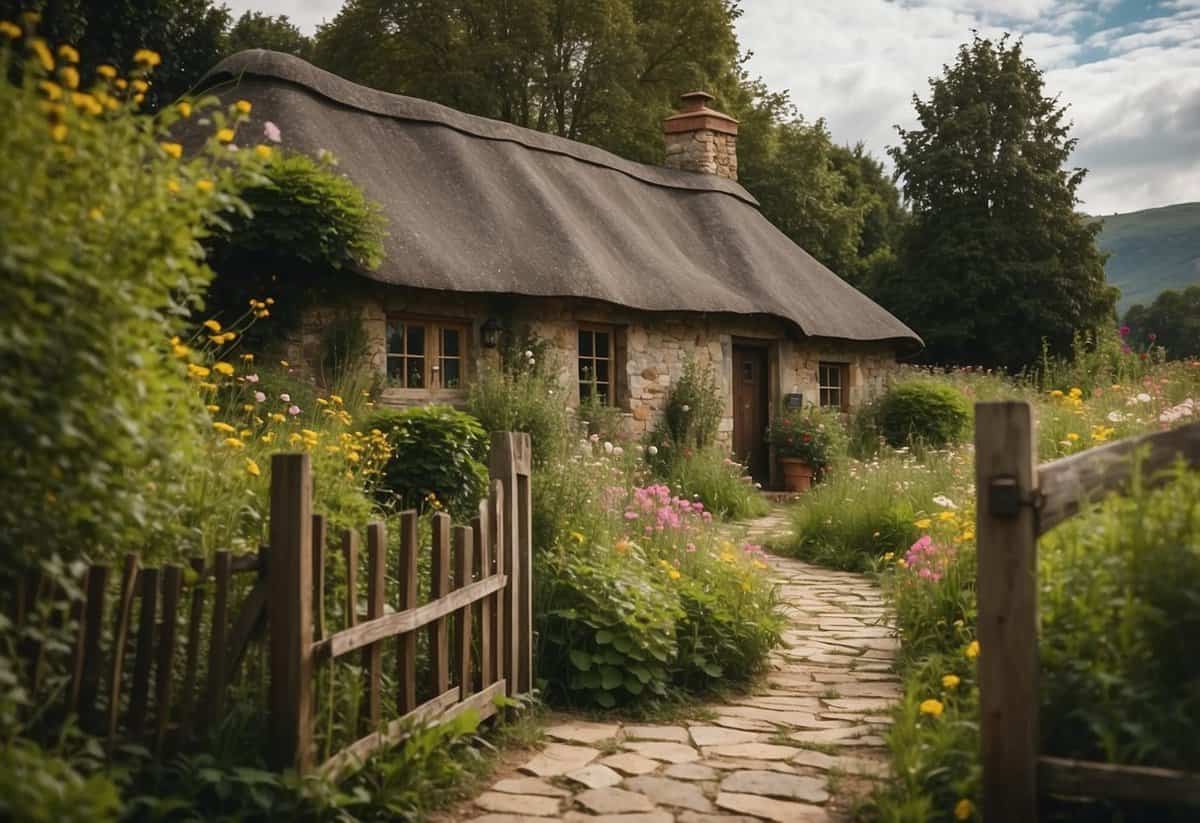Tips for Maintaining a Cottage Core Garden: Creating Your Dream Oasis
Creating a cottage core garden can transform your outdoor space into a charming and cozy retreat. These gardens are known for their relaxed, lush, and somewhat wild look, filled with a mix of flowers, herbs, and vegetables. You don’t need to be a professional gardener to achieve this style.

What steps can you take to keep your cottage core garden thriving while keeping maintenance low? Simple practices and smart planning can help you enjoy a beautiful garden without spending all your time on upkeep. By embracing the right techniques, anyone can create and maintain a delightful cottage core garden.
1) Use Native Plants

Incorporating native plants in your garden is a great way to create a harmonious outdoor space. Native plants are adapted to your local climate, which means they require less water and maintenance.
They also support the local ecosystem by providing habitat and food for wildlife. Birds, bees, and butterflies are more likely to thrive in your garden.
Consider researching native plants in your area. This can make your garden both beautiful and eco-friendly. For more information, check out the benefits of using native plants on Cottage Journal.
2) Incorporate Stone Pathways

Stone pathways add charm and function to your cottage core garden. They can lead you from your house to your garden or patio.
Use natural stone with a riven finish for a softer, rustic look. You can even use leftover stone or rubble from past projects for an eclectic feel. Plant succulents or moss around the stones to keep unwanted weeds at bay.
A well-maintained stone path not only looks great but also helps guide you through your garden journey. Regularly use an edger to keep grass from encroaching on the pathway.
3) Create a Wildflower Meadow

Transform your garden by creating a wildflower meadow. Start by removing any existing turf. You can do this by covering your lawn with black plastic for six to eight weeks. This method helps kill the grass and prepares the soil.
After removing the turf, loosen the soil. Mix wildflower seeds with dry sand to make them easier to scatter. Sow the seeds evenly across the area.
Press the soil down with the back of a metal rake, and gently water the area weekly. For more detailed advice, visit How to grow a Wildflower Cottage Garden – Lovely Greens.
4) Build a Rustic Garden Bench

A rustic garden bench can add charm to your cottage core garden. Use recycled materials like old wood or logs to build it.
Consider placing it under a tree or next to flower beds. This spot can be a cozy place for you to relax and enjoy your garden.
Follow some creative ideas from here to get started.
5) Include a Small Pond

Adding a small pond to your cottage core garden creates a peaceful and attractive feature.
It invites wildlife like frogs and dragonflies, which adds to the natural feel of your garden.
A small pond can also be relatively low-maintenance with the right care and attention.
Consider adding plants like lily pads or reeds to enhance the pond’s beauty.
6) Plant Climbing Roses

Climbing roses can make your garden feel dreamy and charming. They need temperatures between 40 and 60℉ to thrive.
When planting, mix peat moss, potting soil, and mulch to keep the soil healthy. Keep the bud union 2 inches from the top of the soil.
Water regularly or use a drip irrigation system to maintain moisture. For the best results, ensure the soil is loose and loamy with a pH of 6.0 to 6.5.
In cold winters, protect the rose crowns to help them survive. Select canes the size of a straw, dip them in water, then in a root simulator, and plant upright in sandy, loamy soil for propagation.
For more detailed guidance, you can read this guide on planting climbing roses.
7) Add Bird Feeders

Bird feeders can bring a magical touch to your cottage core garden. They attract a variety of birds, adding life and color to the space.
Choose a spot that gets plenty of sunlight and is away from trees and shrubs to keep squirrels at bay.
Try a simple cardboard tube bird feeder for an easy project.
8) Use wooden fences

Wooden fences add a rustic charm to your cottage core garden. They provide privacy and security while blending naturally with the landscape.
Regular maintenance keeps your wooden fence looking great. Inspect it often for damage and apply protective sealants to prolong its life.
Consider adding a sturdy gate to your fence. This not only enhances functionality but also gives easy access to different areas of your garden.
9) Grow Edible Herbs

Growing edible herbs is a delightful way to enhance your cottagecore garden. Herbs like basil, thyme, and parsley can add both beauty and practicality.
These herbs are not only good for the garden but also great for cooking delicious meals. You can also use herbs like rosemary and mint to create flavorful teas.
For a truly picturesque garden, consider planting lemon verbena or lavender. They bring a lovely aroma and can be used in many home recipes. Keep your herbs well-watered and enjoy the fresh flavors they bring to your table.
10) Install fairy lights

Fairy lights add a magical touch to any garden. They create a cozy and whimsical atmosphere, perfect for evenings outdoors.
Wrap fairy lights around trees or hang them above seating areas. This makes your garden look like an enchanted space, transforming it into a nighttime retreat.
Consider using solar-powered fairy lights to save energy. These lights are an eco-friendly option and easy to use.
Understanding The Cottage Core Aesthetic

The Cottage Core aesthetic focuses on creating a cozy, nostalgic vibe that harks back to traditional rural life. It celebrates simplicity, harmony with nature, and a whimsical, unrefined look.
Defining Cottage Core
Cottage Core is all about the charm of simple, rustic living. It takes inspiration from the countryside, with elements like wildflowers, vintage furniture, and handmade, sustainable items.
You might include patchwork quilts, wicker baskets, and antique china in your decor. This style is a celebration of nature and includes gardens that look effortlessly beautiful and abundant.
To achieve this, your garden should mix flowers, fruits, and vegetables for a natural and whimsical look. Avoid overly manicured appearances; let the plants grow freely to create a more authentic feel.
Historical Inspirations
The Cottage Core aesthetic draws from past rural traditions, especially those seen in English country living. Think of the picturesque countryside cottages seen in literature and paintings from the 18th and 19th centuries.
This aesthetic was popularized again in the 2010s, as people sought a simpler, more sustainable lifestyle. It combines elements like natural wood, handmade crafts, and classic country utilitarianism.
In your garden, focus on plants and flowers that were commonly found in old country gardens, like roses and wildflowers. These help bring the historical charm of Cottage Core to life.
Choosing The Right Plants

Selecting the right plants is key to creating a charming and sustainable cottage core garden. Focus on incorporating native and heirloom varieties and considering seasonal changes for year-round beauty.
Native And Heirloom Varieties
Choosing native plants helps your garden thrive in its natural environment. Native plants are well-suited to the local climate and soil, meaning they need less water and care. They also provide habitat for local wildlife like birds and butterflies.
Popular native options include:
- Coneflowers: Bright and easy to grow.
- Black-eyed Susans: Tall and striking with yellow petals.
- Bluestem Grass: Provides texture and height.
Heirloom varieties add historical charm and unique beauty. These plants have been passed down through generations and often have unique flavors and appearances. Consider these heirlooms for your garden:
- Heirloom roses: Fragrant and colorful.
- Old-fashioned hollyhocks: Tall and vibrant.
- Antique peonies: Timeless, with large flowers.
Seasonal Considerations
Your cottage garden should bloom beautifully all year round. Plan your planting to ensure there are blooms in every season.
Spring blooms:
- Daffodils: Bright yellow and hardy.
- Tulips: Classic and colorful.
- Primroses: Varied colors and low maintenance.
Summer flowers:
- Lavender: Fragrant and soothing.
- Roses: Continual bloomers.
- Peonies: Lush and vivid.
Fall interest:
- Asters: Late-blooming and vibrant.
- Chrysanthemums: Full and colorful.
- Sedum: Hardy and eye-catching.
Winter interest:
- Evergreen shrubs: Like boxwood for structure.
- Hellebores: Early bloomers in winter.
- Red twig dogwood: Striking red branches.
By thoughtfully choosing native and heirloom plants and planning seasonally, you can ensure your cottage core garden is both beautiful and sustainable all year long.







